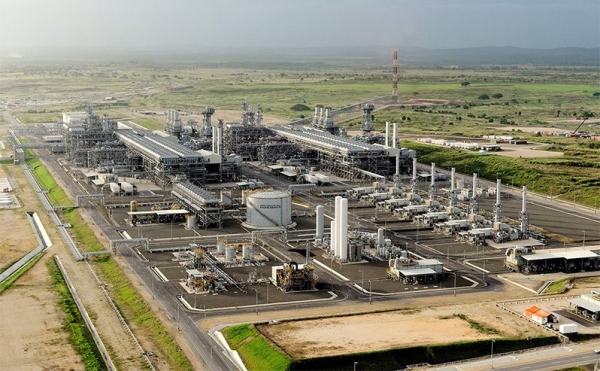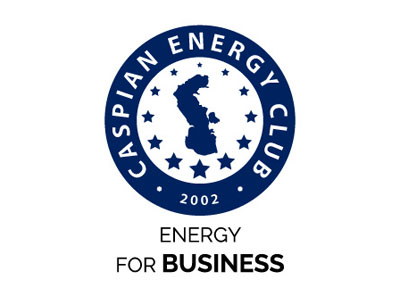Gas is rapidly taking over oil in the global energy balance. Gas consumption is growing twice as fast as oil consumption. Rapid growth of consumption of liquefied natural gas (LNG), as well as GTL technologies, began in 1990.
27% of global LNG production falls to the share of 4 African countries: Algeria, Nigeria, Egypt and Libya. Qatar holds the lead of production in the LNG market - 26.5%. Australia accounts for 26%. The third and fourth places are shared by the United States (14.7%) and Russia (10%).
Qatar’s state-owned company Qatar Petroleum has announced plans to increase LNG supplies in the coming years from the current 77 million tons to 110 million tons by 2025 and to 126 million tons by 2027, that is to say, by 43%. Investments in the project will make $29 billion, of which slightly less than half is meant for the con struction of new facilities. The launch of the project is scheduled for the end of 2025.
Shortage of capacities
“The global LNG market has been developing quite actively in recent years. In the last 6 years alone, production has grown by 55%, from 244 million to 378 million tons/ year. Drawing on the current investment projects, we can expect that by 2025 the world’s capacity will increase by another 20%, by 2035 – by 100%, by 2050-by 200%, when gas significantly takes an upper hand over oil both in the transport sector and in the industrial industry. The increase in the liquefied gas consumption is caused by two factors: firstly, liquefaction technologies started getting cheaper. Secondly, the overall liberalization of the gas market played a role: a buyer and a seller are now less dependent on each other during LNG supplies. Physically, LNG occupies 600 times less volume than the initial product and is of no industrial value without a regasification infrastructure (gas in its natural state). 1 cubic meter of LNG weighs 400 kg. (0.40 t.). Hence, 1.67 cubic meters or 0.67 tons of LNG are obtained from 1000 cubic meters of natural gas. The plant capacity is measured in cubic meters of raw feedstock or in tons of produced LNG.
There are gas liquefaction plants in Algeria, Indonesia, Trinidad and Tobago, Venezuela, Nigeria, Norway, Qatar, Australia and Oman. To date, under construction are liquefied natural gas (LNG) plants with a total capacity of more than 100 million tons. However, they will not be enough given the additional growth in demand (at least 200 million tons) until 2050. LNG demand is expected to grow 3.4 percent per year by 2035. Meanwhile, about 100 million metric tons of additional capacity will be needed to meet both demand growth and decline of production within ongoing projects. LNG demand growth will slow noteworthily, but will still grow by 0.5 percent from 2035 to 2050, with more than 200 million metric tons of new capacity to be needed by 2050.
New wave
The new wave is led by North American projects: 3rd stage of Corpus Christi and Calcasieu Pass, expansion of Sabine Pass and Golden Pass in the United States, as well as the Canadian LNG Canada and Woodfibre.
LNG accounts for 51 million tonnes, or 49% of future production volumes. A number of facilities are also under construction in Africa: Coral South FLNG, Greater Tortue, Mozambique LNG and 7th phase of Nigeria LNG – a total of 26 million tones. Three plants with the total capacity of 6 million tones are under construction in Asia: PFLNG Dua, Sengkang LNG and 3rd phase of Tangguh LNG. Three construction projects are currently underway in Russia: 4th phase of Yamal LNG, the plant at the Portovaya compressor station and Arktik LNG-2 – with the total capacity of 22 million tones.
The world’s first gas liquefaction plant was built in the port of Arzew, Algeria, in 1964. The plant with a small capacity (1.7 billion cubic meters) was closed in 1997, then modernized and put back into operation in 1999. 4 years later it was supposed to be shut down completely, but it continues operating at its limits until now due to the shortage of capacities. The oldest plant in the world has long been not the main one for Algeria. 95% of production falls to the share of three other plants, two of which are also located in Arzew (installed capacity – 11.2 and 12.3 billion cubic meters). The third largest Algerian plant is located in Skikda.
Turkey and Greece
The LNG receiving infrastructure is developing in parallel with the growth of consumption. The Southern Gas Corridor (SGC) which delivers gas from Azerbaijan to Europe has been built. Gas connections with neighboring countries are being strengthened, and also the foundation for the implementation of the East Med main gas pipeline, through which gas from the Eastern Mediterranean will flow to Greece, has been laid. The interest of the American producers tells about the long-term liquidity of both flexible market (short-term spot supplies) and stable conventional market (FOB). For instance, in 2020, Chevron bought into the projects on the Israeli shelf which will become the resource base of the East Med main gas pipeline. The United States is generally focused on increasing LNG supplies to Europe, which is only at first glance economically less attractive for Europe than continental pipeline gas, but undoubtedly the increase in its supplies will have a positive impact both on its cost to consumers and on the global market situation as a whole.
In the Eastern Mediterranean, American Chevron has joined the projects offshore Israel which will let Greece, together with Turkey, become important players in energy diversification in South-Eastern Europe.
Implementation of major infrastructure projects continued even in the year of the pandemic. Among them were the TransAdriatic Gas Pipeline (TAP, European part of SGC), the Greece-Bulgaria gas interconnector (IGB), the floating regasification unit (FSRU) in Alexandroupolis, and the Greece-North Macedonia gas interconnector. All of them are changing the energy map of Europe.
The United States also supports the ambitious goal of K. Mitsotakis to phase out brown coal production by 2028, the only way to achieve this is to use gas as an intermediate fuel, and most of this gas will be LNG from reliable suppliers around the world. Europe aims to shift to carbon neutral energy sources and abandon fossil fuels in 2050.
Natural gas, as the most environmentally friendly type of fossil fuel, will increase its importance for Europe during the transition period. Moreover, today’s expensive alternative technologies, as well as the low probability of abandoning the use of gas in the domestic sector and population growth in developing countries suggest a much longer and geographically uneven transition period.





